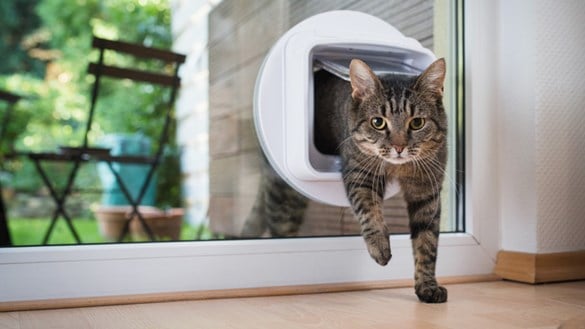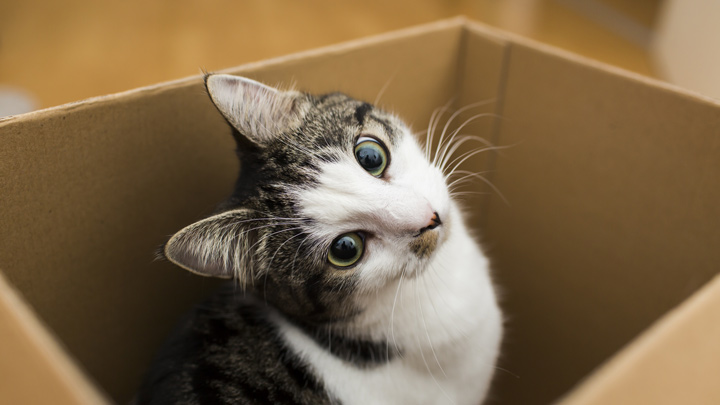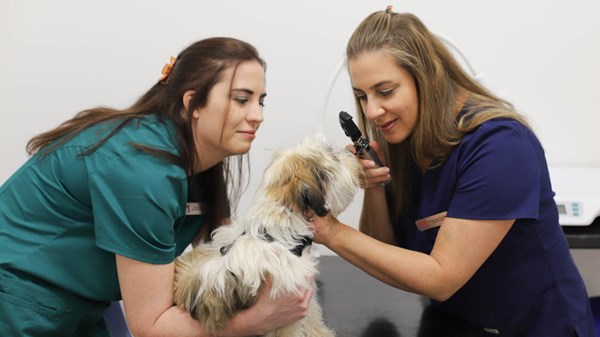Cat And Kitten Microchipping
A microchip is the best chance for a wandering cat to be reunited with their owner. Read on to see advice on microchipping your cat, what to do if you move home or change your details and how to find cat and kitten microchipping near you.

Cat and kitten microchipping
By their very nature, cats are roaming animals who love to explore. No matter how hard you try to keep them safe there’s always a risk they could get lost or struggle to find their way home.
What is a cat microchip?
A cat microchip is a small device, about the size of a grain of rice, which is inserted under your pet’s skin. The microchip has a unique code which can be read by a scanner. The chip doesn’t store personal information, but the code is kept on a central database so if your cat or kitten is found and scanned, then it can be traced to you. The organisation that has your pet can use the database to access your details and get in touch to tell you your cat or kitten is safe.

Do I have to microchip my cat?
A new legislation has been introduced in England on 13th March 2023 and all cat owners must have their pets microchipped by June 10, 2024. Owners who don't get their cat microchipped will be given 21 days to have one implanted and if they don't, they could face a fine of up to £500.
The change is part of the Government’s flagship Action Plan for Animal Welfare, and campaigners hope it will mean more lost or stray cats can be reunited with their owners.
 How do vets insert a microchip in a cat?
How do vets insert a microchip in a cat?
Microchipping your cat isn’t dissimilar to them receiving their vaccinations. The microchip is inserted via a quick injection between your cat’s shoulder blades and they should experience little to no discomfort.
Once in place, your cat won’t feel the chip. The actual chip sits inside a special capsule which won’t break down and is designed to last your cat’s entire life.

When should I get my kitten microchipped?
There’s no minimum age to have your kitten microchipped although you should have it done before they go out for the first time. Many owners will do it at the same time as they’re having their pet neutered when they’re already under general anaesthetic. Most rescue centres will microchip kittens by the time they’re eight weeks old. In any case you should get them microchipped before you let them outside to explore.
Whether you’re buying a kitten or welcoming an older cat into your home, microchipping them should be top of your priority list because it gives you the best chance of being reunited with them if they’re lost or stolen. If you’re moving house, always remember to change your address and/or phone number on the microchip.
The benefits of microchipping
Cats are inquisitive by nature which is one of the things we love about them, but it also means there is more risk of them getting lost. Pet theft is also a problem, particularly where rare or expensive breeds are concerned, and microchipping can be a way of tracing the rightful owner.
Cats also like to visit other households and can be adopted by well-meaning families who might think they’re a stray if they’re not wearing a collar. The presence or absence of a microchip will show whether they are merely lost, or a genuine stray and it can prove ownership if you get into a dispute with your cat’s adopted family.
Whilst a collar can also provide valuable contact information if your pet goes missing, it’s not as secure as a microchip because it can be lost or removed.

Is there a GPS chip for cats?
Microchipping doesn’t currently provide location information on your cat’s whereabouts. If they’re lost and taken to a rescue centre, a chip will reveal details of their ownership. While technology has advanced rapidly over the last two decades it hasn’t reached the point where a GPS tracker can be inserted under the skin. There are many reasons for this, for example, the size of the tracker would be too large for the cat to comfortably live with, and the battery required to power it would need replacing. Whilst it’s not yet possible, technology is constantly evolving and GPS chips might well be available in the future.
If you do want to track your cat’s movements, there are various GPS tracker collars available on the market, although none of them are fool proof – collars can be removed or fall off, and many have a short battery life, meaning if your cat is lost you have a very limited amount of time to locate them.
How do I change my cat's microchip?
If you move home or change contact details, it's vitally important that you get your cat's microchip updated. Contact the database where your pet is registered to change your contact details. If you know the database your pet is microchipped with, you can check details online or by phone.
If you don’t know the database your pet is microchipped with, take them to your local vet or rescue centre. They'll be able to do a scan and give you the number.

Our Healthcare Plan For Your Cat
With the Medivet Healthcare Plan, you can save an average of £165 each year and that’s without discounts that the plan offers on top.
Learn more
Book A Microchipping Appointment
If you'd like to book a microchipping appointment for your kitten or cat, contact your local practice. If you're not sure where your local Medivet practice is, visit the page below.
Find a vet near youRelated Articles

Cat Nutrition
Feeding your cat the right diet can help keep them healthy for years to come. Understanding how much to feed your cat plays a key role in maintaining a healthy weight.
Read article
Understanding Your Cat's Behaviour
Cats are intriguing pets, we’ve tried to answer some common questions from cat-owners about their cat’s behaviour.
Read article
The Importance Of Preventative Care
Vaccines, boosters and medical checks are important for maintaining your pet's health.
Read article
